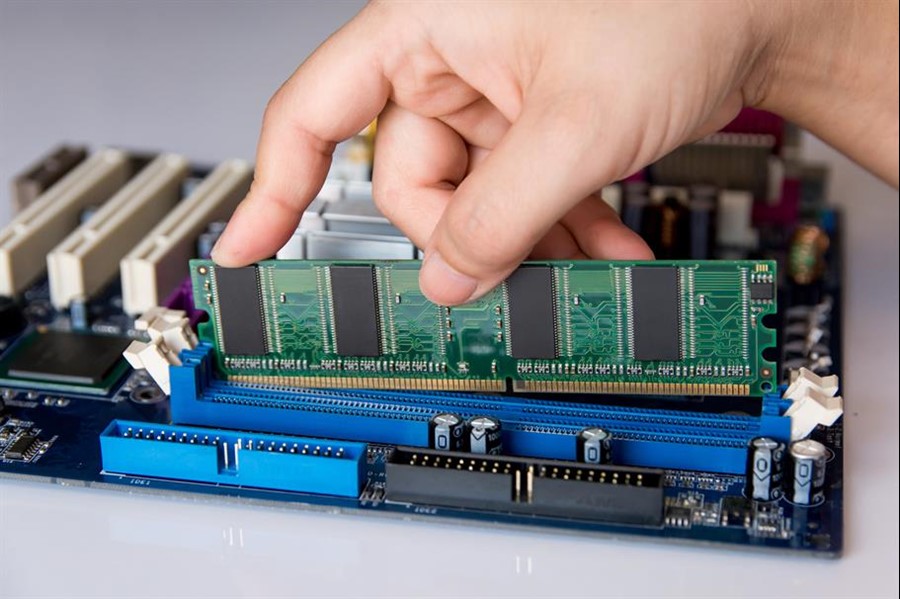Graphene-sandwiched RAM devices shrunk beyond physical limits
Researchers at Graphene Flagship partner the Cambridge Graphene Centre, University of Cambridge, have developed a new type of resistive memory that can be scaled down beyond current limitations.
Researchers at Graphene Flagship partner the Cambridge Graphene Centre, University of Cambridge, have developed a new type of resistive memory that can be scaled down beyond current limitations. They also collaborated with colleagues at Soochow University to discuss the state-of-the-art technology and evaluate the future of resistive memories based on graphene and related materials (GRMs). Furthermore, Graphene Flagship partners at the University of Strasbourg, CNRS, and Thales, France, IIT and BeDimensional, Italy, and ICN2 and CSIC, Spain, along with SAC member Luigi Colombo, analysed the properties and device structures required for practical GRM-based memory devices to reach their potential.
Data storage in computers comes in two distinct flavours: volatile and non-volatile memory, and both are essential in modern electronic devices. Volatile memory is used in random access memory (RAM) and computer processors to store temporary data, whereas non-volatile memory is used in hard drives and flash drives for long-term data storage.
Over the past 25 years, this technology has advanced tremendously – with Moore's Law predicting a near-doubling in the number of transistors on a microchip every two years, while the cost of computers roughly halves. For most of the past few decades, this has resulted in exponential growth in computer storage space and a corresponding reduction in size. But Moore's Law is dying, and we are rapidly approaching the physical limits of data storage. One of the reasons for this is that when the size of memory devices approaches the nanometer scale, leakage currents in capacitors lead to severe data losses.
By integrating a layer of graphene into resistive RAM devices made with tetrahedral amorphous carbon, Graphene Flagship scientists have now developed a new type of memory that can be scaled down beyond previous size limitations. The new memory devices could lead to better-performing computers and personal electronics with much larger storage capacities. In the devices, tetrahedral amorphous carbon, which has high electrical resistance, is sandwiched between two electrodes. When an electric field is applied between the electrodes, a conductive path forms in the carbon layer, connecting the two electrodes and forming a low resistance state. The high- and low-resistance states can be used to encode data in the form of binary 1s and 0s.
In their paper, published in the journal 2D Materials, Graphene Flagship partner University of Cambridge showed that by adding a graphene layer between an amorphous carbon layer and one of the electrodes, they can significantly improve the performance of the memory and suppress the leakage current that leads to data loss. "Leakage currents become more dominant as device sizes get smaller, and it's important that the two memory states – the high- and low-resistance states, or the ones and zeroes – are not too close together," explains Anna Ott from the Cambridge Graphene Centre. "Adding a graphene layer improves this ratio by an order of magnitude and suppresses the leakage current, showing that amorphous carbon-based memories are suitable for achieving the smallest possible memory size."
In their Advanced Electronic Materials paper, the Graphene Flagship researchers conclude that the main challenges facing scientists developing new, state-of-the-art resistive RAM devices, are creating durable devices that can run for over 109 switching cycles and achieving data retention times of over 10 years. The researchers find that augmenting resistive RAM with GRMs results in highly stable devices with very promising performance. They show that GRMs are already fit for some non-volatile memory requirements, and that they can be a promising alternative to currently used technologies.
In the Advanced Materials publication, the Graphene Flagship researchers state that for these technologies to be realized, scientists must focus on two main areas of progress: high-speed and high-capacity non-volatile memories and low-cost, flexible and transparent storage devices for wearable electronics. "You normally need one to two decades of intense research before an exciting proof-of-concept like this can turn into a game-changing technology and hit the market," comments Samorì from Graphene Flagship Partner University of Strasbourg. He emphasizes that this is feasible, but sustainable and continuous funding support will be needed before it can become a reality.
Indeed, Ott explains that graphene-enabled memory devices compare well to state-of-the-art: in terms of speed, they are faster than traditional flash memories, comparable to the dynamic RAM common in today's computer components, and slower than static RAM, which Ott says is expected. "Carbon-based resistive RAM provides much better scaling possibilities compared to static and dynamic RAM and flash memories. We can also add oxygen to get oxygen-amorphous carbon, which improves the endurance – how many times the device can be switched between the two resistance states – to be comparable to flash memories," she continues.
Daniel Neumaier, leader of the Graphene Flagship's Electronic Devices Work Package, comments: "These papers are highly valuable for scientists trying to create smaller and smaller resistive RAM technology. Data loss due to leakage currents is one of the main problems in nanoscale-sized memory devices, and the work demonstrates that incorporating tetrahedral amorphous carbon reduces this problem."
Further collaborations could lead to graphene-integrated memories hitting the market. However, the integration of GRMs into memory manufacturing processes may be a challenge. "This will be one of the main issues to overcome in order to bring graphene from laboratories to factories," concludes Ott.
Andrea C. Ferrari, Science and Technology Officer of the Graphene Flagship and Chair of its Management Panel, adds: "These publications show that graphene and related materials are finding their way into new applications of resistive memories. These are at the centre of an ever-increasing research effort and, yet again, the Graphene Flagship and its collaborators are at the forefront of not just novel research, but also of the outlining of future directions."
References
- A. K. Ott, C. Dou, U. Sassi, I. Goykhman, D. Yoon, J. Wu, A. Lombardo and A. C. Ferrari. 'Tetrahedral amorphous carbon resistive memories with graphene-based electrodes', 2D Materials, 5, 045028 (2018).
- F. Hui, E. Grustan‐Gutierrez, S. Long, Q. Liu, A. K. Ott, A. C. Ferrari and M. Lanza. 'Graphene and Related Materials for Resistive Random Access Memories', Adv. Electron. Mater., 1600195 (2017).
- S. Bertolazzi, P. Bondavalli, S. Roche, T. San, S. Y. Choi, L. Colombo, F. Bonaccorso and P. Samorì. 'Nonvolatile Memories Based on Graphene and Related 2D Materials', Adv. Mater., 31, 10 (2019).

Graphene-sandwiched RAM devices shrunk beyond physical limits. Adding graphene to amorphous carbon random-access memories could lead to smaller memory devices that consume less power.




